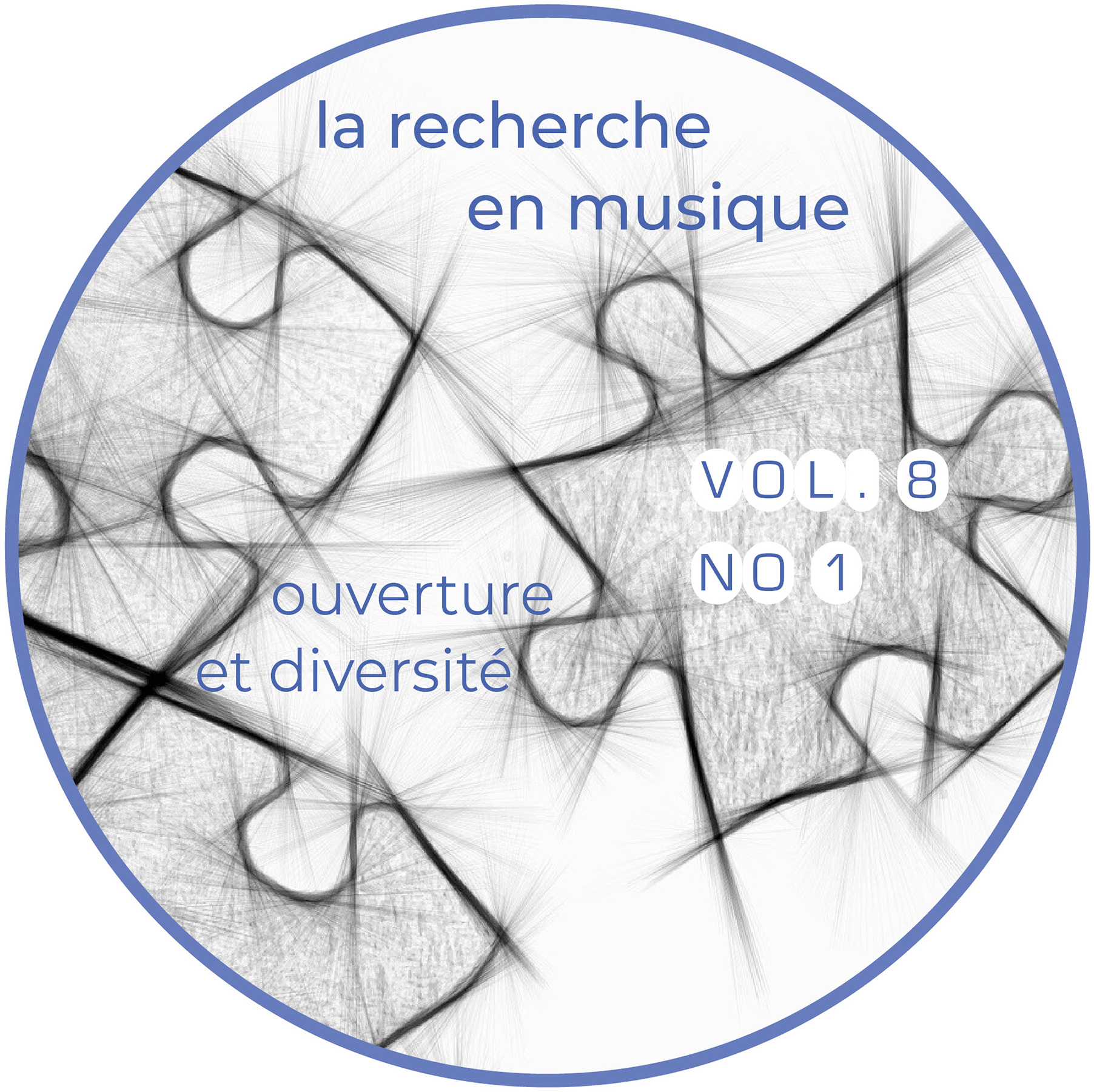Abstracts
Résumé
Les transformations de l’industrie de la musique causées par la révolution digitale ont forcé les musiciens à maîtriser de nouvelles compétences qui vont au-delà de leurs talents artistiques. Une de ces compétences est le développement et la gestion de leur marque. Le présent article propose un canevas d’analyse de la marque du musicien. Cet outil, composé de cinq sections distinctes – le contexte social, l’univers artistique, la proposition artistique, l’univers individuel et la proposition individuelle – permet l’analyse de la légitimité artistique et de l’authenticité du musicien.
Mots-clés :
- marque,
- marque-personne,
- marketing,
- musicien,
- communication
Abstract
Changes in the music industry caused by the digital revolution have forced musicians to master new skills that go beyond their artistic talents. One of these skills is personal brand development and management. This article presents a framework for analyzing a musician’s brand. This tool, composed of five distinct sections—social context, artistic environment, artistic statement, personal environment, and personal statement—makes it possible to analyze a musician’s authenticity and artistic legitimacy.
Keywords:
- brand,
- person-brand,
- marketing,
- musician,
- communication
Appendices
Bibliographie
- Berman, Michele R., et Mark S. Boguski (2018), « Lady Gaga. Music Icon, Budding Actress… and Fibromyalgia Patient », Medpage Today, 25 octobre, https://www.medpagetoday.com/popmedicine/celebritydiagnosis/75914, consulté le 7 juin 2021.
- Brunet, Johanne, et al. (2017), Gestion du marketing, Montréal, Chenelière éducation.
- Centeno, Dave, et Jeff J. Wang (2017), « Celebrities as Human Brands. An Inquiry on Stakeholder-actor Co-creation of Brand Identities », Journal of Business Research, vol. 74 (mai), p. 133-138, https://doi.org/10.1016/j.jbusres.2016.10.024.
- Corry342 (2012), « February 19, 1969, Fillmore West. Grateful Dead/Golden Toad (Bob Thomas) », Hooterollin’ Around [blogue], 13 juillet, http://hooterollin.blogspot.com/2012/07/february-19-1969-fillmore-west-grateful.html, consulté le 26 mai 2021.
- Eng, Bennie, et Cheryl B. Jarvis (2020), « Consumers and Their Celebrity Brands. How Personal Narratives Set the Stage for Attachment », Journal of Product & Brand Management, vol. 29, no 6 (septembre), p. 831-847, https://doi.org/10.1108/JPBM-02-2019-2275.
- Gorbatov, Sergey, Svetlana N. Khapova, et Evgenia I. Lysova (2018), « Personal Branding. Interdisciplinary Systematic Review and Research Agenda », Frontiers in Psychology, vol. 9 (novembre), article 2238, https://doi.org/10.3389/fpsyg.2018.02238.
- Keirans, Maeve (2015), « See What Lady Gaga Meat Dress Looks Like Now, 5 Years Lates », mtv News, 28 août, http://www.mtv.com/news/2254239/lady-gaga-meat-dress-vmas, consulté le 7 juin 2021.
- Moulard, Julie G., Carolyn P. Garrity, et Dan H. Rice (2015), « What Makes a Human Brand Authentic? Identifying the Antecedents of Celebrity Authenticity », Psychology & Marketing, vol. 32, no 2 (Janvier), p. 173-186, https://doi.org/10.1002/mar.20771.
- Muñiz Jr, Albert M., Toby Norris, et Gary A. Fine (2014), « Marketing Artistic Careers. Pablo Picasso as Brand Manager », European Journal of Marketing, vol. 48, no 1/2 (février), p. 68-88, https://doi.org/10.1108/EJM-01-2011-0019.
- Parmentier, Marie-Agnès, Eileen Fischer, et A. Rebecca Reuber (2013), « Positioning Person Brands in Established Organizational Fields », Journal of the Academy of Marketing Science, vol. 41, no 3 (mai), p. 373-387, https://doi.org/10.1007/s11747-012-0309-2.
- Pluntz, Camille, et Bernard Pras (2020), « “It’s Good.” “Says Who?”. The Mediating Role of Professional Legitimacy on the Relationship between Film-extension Performance and Changes in Directors’ Human Brand Identity », Journal of Product & Brand Management, vol. 29, no 6 (septembre), p. 745-765, https://doi.org/10.1108/JPBM-02-2019-2272.

